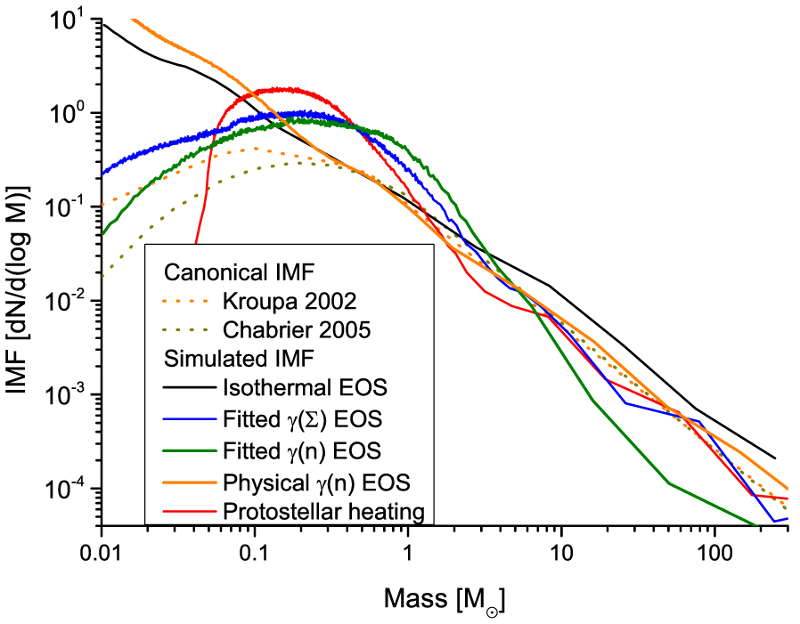| EPoS Contribution |
|
What can Simple Models tell us about Star Formation?
David Guszejnov Caltech, Pasadena, US | |
| Star formation includes a large amount of nonlinear physics (turbulence, cooling, feedback etc.) making it a challenge to run simulations with detailed physical models. A possible approach is to formulate simple, easily testable models to try to find the minimum physics required to reproduce different aspects of star formation. In this talk I will present a highly flexible semi analytical model that allows one to easily 'plug in' and test different physics. Using this tool we have shown that a universal IMF model requires the presence of an invariant mass scale. Although both feedback and equation of state thermodynamics can provide a mass scale, we showed EOS mass scales are inherently sensitive to initial conditions. Unlike most analytical models this framework provides both spatial and temporal information allowing us to investigate the clustering and binarity in different models. So far we have shown that isothermal fragmentation (which is scale free) is able to reproduce the stellar correlation function at long distances. This result is robust to changes in the small scale physics (e.g. adding protostellar feedback, non-isothermal equation of state). | |
 | |
| Caption: The IMF in the case different classes of star formation models. In the models with nontrivial equation of state (EOS) the transition point to super-isothermal (γ > 1) behavior is either set by the physical opacity limit or artificially "fitted" to produce a peak around the observed values. | |
| Collaborators: P.F. Hopkins, Caltech, USA M.R. Krumholz, ANU, AU |
Key publication
Suggested Session: Cores and Collapse |

